Drill types explained
It’s a question we get asked quite a lot. Particularly by people new to DIY, but more often than you think by those in the trade as well. I guess if you’ve always managed to get by with the tools you have then why you would need to worry about details like this. Well, whoever you are reading this, you’re not alone and I am going to do what I can to briefly explain the fundamental differences so you know what you’re buying/getting/using a little better.
So to put it as plainly an as quickly as I can, a combi drill is an allrounder, it can drill, screw drive and drill into masonry (brickwork), a combi drill is the most common type of power drill that you’ll see in stores, job sites and tool bags around the world. A Drill Driver is EXACTLY the same as a combi drill, except for the fact that a drill driver can’t drill into masonry (it doesn’t have the required ‘mode’ which I’ll explain more about below). And finally an impact driver is designed specifically for screwdriving, although you could just about use one to drill a hole, the whole point of an impact driver is that it should be used for screwdriving alone and it does a much better job of driving than a combi drill.
Then you go, you can stop reading and crack on with your day…. Or read below for more of a detailed explanation if you want to show off a bit!
The difference between combi drills and drill drivers
So let’s take impact drivers out of the equation for now and solely look at combis and drill drivers. Now, these are known by many a name; Power Drills, Percussion Drills, Hammer Drills (Don’t get me started on those two) Hammer Drill Drivers or often just ‘Drills’. However, for clarity and consistency, we called them ‘Combi Drills’ and ‘Drill Drivers’ as these names give you the best clue as to what you’re actually getting when you buy or use one of these tools.
Combi drills and drills drivers are pretty much the same things and they’re all cordless now (you can still find some old boys out there) and they’re by far and away from the most popular power tool out there. The difference all comes down to what ‘Modes’ they have, and therefore what jobs they can be used for.
A Combi (Combination) drill is exactly what its name suggests – a combination of different modes, namely Screwdriver mode, Drilling Mode, and Hammer Drilling Mode. Switching between these modes is typically done via the collar of the drill and the modes are represented by Icons (for drilling and hammer drilling) and then numbers that reflect torque (tightening) settings when it comes to screwdriving modes.
Screwdriver mode
As you’d imagine is all about screwdriving, and on this mode, you engage the torque settings as you tell the drill how much effort you want to put into the tightening action while you’re screwdriving. When you’re screwdriving you’ll often feel a good old chunk of force applied to your wrist and you’ll have to make sure that you keep steady and grip tightly (This will be important later I promise).
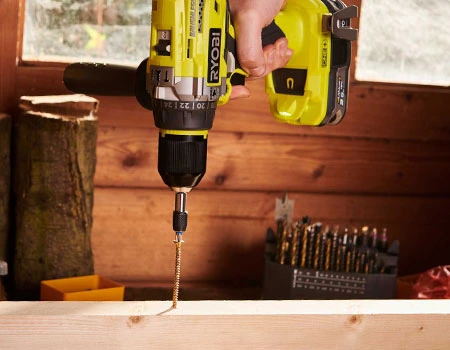
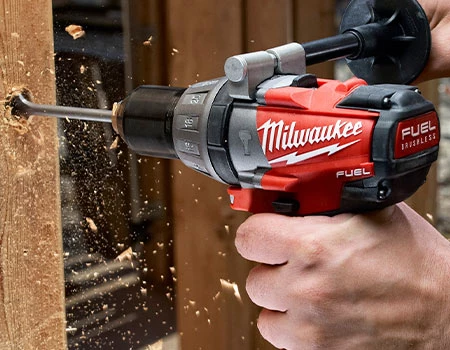
Drilling mode
Pretty straightforward this one, the motor is asked to simply rotate without the additional tightening energy that screwdriver mode brings you. Simply rotate the motor and allow your drill bits to forge a hole into metal, plastics, and wood. If you’re drilling holes into brickwork or any other form of masonry, that’s when you’ll need to engage ‘Hammer Drilling’ mode.
Hammer drilling mode
Now because of the nature of Masonry if you have a drill bit simply rotate you’ll never be able to break the masonry down to drill into it, you’ll just be left with a spinning drill bit, even if it’s a masonry bit (Click here to read about the different types of drill bit).
What Hammer Drilling mode does is engage 2 rotational, grooved discs, one of which stays in situ and the other begins to spin round, and the rotation discs spins in engages and disengages with the other discs grooves – this happens dozens of times per rotation and what it will do is make the drill bit not only spin around on its axis but also have an in and out action. Therefore while hammer action engages the drill bit not only spins but hammers/chisels/chips away at the masonry in its path, thus enabling you to drill a hole.
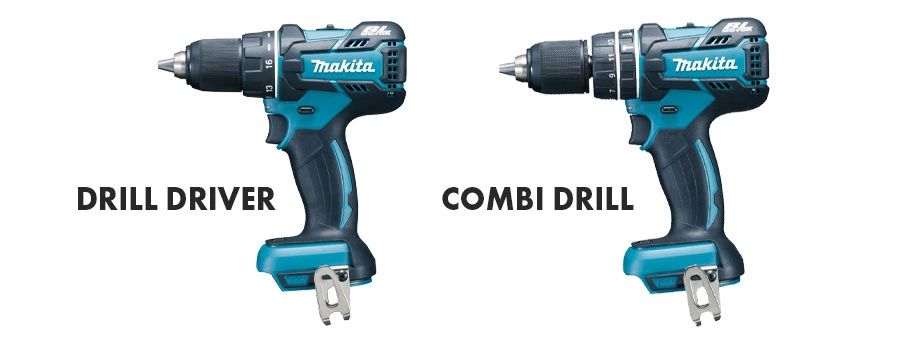
So that’s what a combi drill delivers, as you can probably tell is why it’s so popular, it’s a jack of all and will help you out in plenty of scenarios. A Drill Driver (again as the name suggests) has the modes for regular drilling and for screwdriving, but is without the ‘Hammer Drilling’ mode so it can’t be used in masonry. As you can see from the above illustration the Drill Driver has a smaller collar than the Combi Drill as it doesn’t need the additional room for the Hammer Action selection or the mechanism to engage hammer action internally.
Why buy a drill driver?
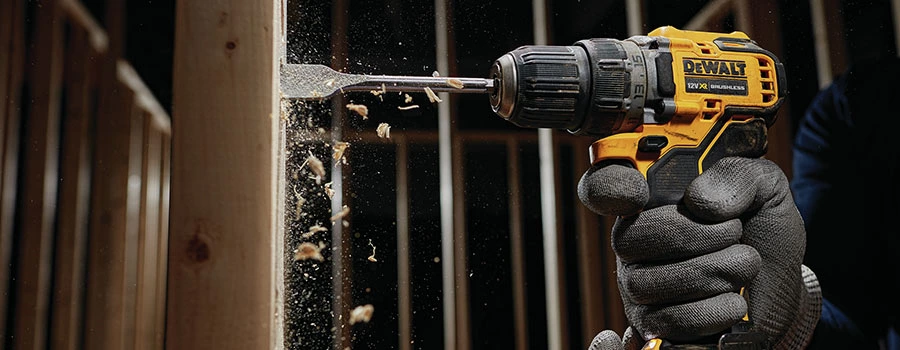
It’s a fair question, given that generally speaking Drill Drivers and Combi Drills are pretty much the same price. Well, it’s all about a trade-off and knowing what’s more important to you. Without the hammer action, a Drill Driver can be considerably more compact and lightweight than a combi drill, which if you’re going to be using one of these day in day out, or for a long period of time can make a huge difference to you in terms of fatigue.
Additional many trades and keen DIYers are now turning to specialist tools that do the job much better than a combi drill. So much like an impact driver is a specialist screwdriver (which I’ll come onto shortly), many users now own SDS drills which are specialist masonry drills. If you’re interested you can read my ‘What is as SDS Drill’ post here or Compare a combi drill and an SDS Drill Here. But in essence, people are starting to say that they simply don’t ever use the Hammer Drilling mode on their combis, because they have something better that does the same job.
The difference between drills and impact drivers

So now for something completely different (kinda). An impact driver (AKA A Rattler) is clearly different from a combi or a drill driver in terms of appearance. Is smaller, shorter, has a different style of chuck, and my word it’s louder! As I’ve mentioned a couple of times an impact driver traditionally has 1 mode (I know there are all sorts of fancy ones now with multiple electronic modes, but in the context of this article and the ‘modes’ I am talking about there’s only 1 so shush!) and that is screwdriver mode. This bad boy isn’t interested, or particularly good at drilling holes in any material, let alone masonry.
So it’s designed to be the ultimate specialist tool for driving screws. The internal workings of an impact driver are totally different to that of a drill (hence the size difference), an impact driver has 2 pistons which each swing around 180 degrees of the motor and smash into the other one, which in turn swings around the opposite 180 degrees of the motor and smashing into the first, then first goes again and so on…. This is why they’re called ‘impact’ drivers… and this action does 3 things;
Firstly it generates a huge amount of fastening torque (much more than you combi drill can), imagine tightening a wrench/spanner up to fixing and then smashing the wrench with a hammer to get the fixing to tighten further – this is essentially what is happening inside an impact driver. Its drives screws harder, easier, and quicker than a combi.
Secondly, transfer the torque strain all into the tool, so there is little to no pressure put on your wrist at all – which is why these are so popular with people doing lots of screwdriving throughout a professional or DIY job
Thirdly makes a bloody loud noise! There is a loud rattle sound when an impact driver is tightening you fixings for you and this is the noise of those 2 positions smashing into one another. This is why impact drivers are often called ‘Rattlers.
So there you go, hopefully, this gives you a better idea of the differences between Combi Drills, Drill Drivers, and Impact Drivers. Please let me know in the comments below if you found this article useful or if you have any further questions I can help with.
Whilst you’re at it you can shop now for the latest models deals and prices below:

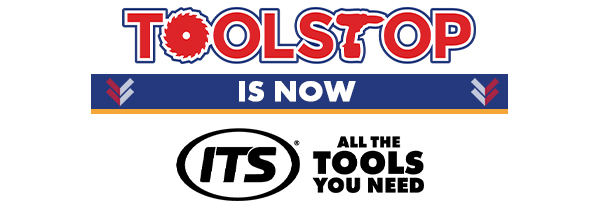

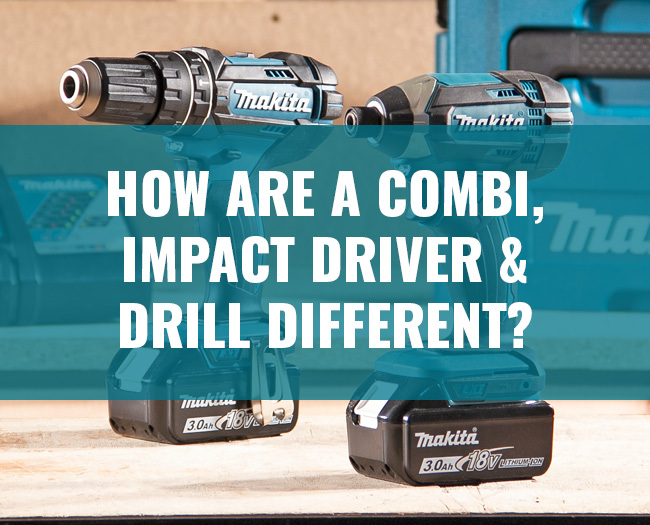
Very interesting and informative, put clearly.
Very informative and has certainly helped my purchasing decision.
At last – I understand!